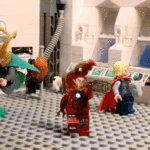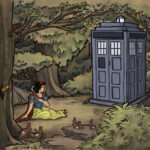Heavy sea (by Pall Jokull Petursson).
Author: chris
-
-
-
i put my google’s safe search on strict just to see what would come up when i typed in doggy style and

AT DAWN WE RIDE

-
-
Come Away with Me You Comin’ Blondie? Part of Every World Adventure in the Great Wide Somewhere Falling Escape from the Dark Forest Illustration by KAREN HALLION
-
-
-
-
Normal Color Vision Protanopia Deuteranopia Tritanopia Color Blindness
Color blindness, also known as color vision deficiency, is the inability or decreased ability to see color, or perceive color differences, under normal lighting conditions. 5 to 8% of the men and 0.5% of the women of the world are born colorblind.
Inside our eyes, there are 3 different types of cone cells which are sensitive to one of three wavelengths of light: red (long), green (middle), and blue (short). Color blindness occurs when one or more of someone’s cones are either missing or absorbing light abnormally.
Based on clinical appearance, color blindness may be described as total or partial. Total color blindness is much less common than partial color blindness.
There are two major types of color blindness: those who have difficulty distinguishing between red and green, and who have difficulty distinguishing between blue and yellow.
Types of color vision deficiency
- Monochromatism: Either no cones available or just one type of them.
- Dichromatism: Only two different cone types, the third one is missing completely.
- Anomalous trichromatism: All three types but with shifted peaks of sensitivity for one of them. This results in a smaller color spectrum.
Dichromats and anomalous trichromats exist in 3 different types according to the missing or malfunctioning cone:
- Tritanopia/Tritanomaly: Missing/malfunctioning S-cone (blue)
- Deuteranopia/Deuteranomaly: Missing/malfunctioning M-cone (green)
- Protanopia/Protanomaly: Missing/malfunctioning L-cone (red)
Further Reading, Videos, Sources


























